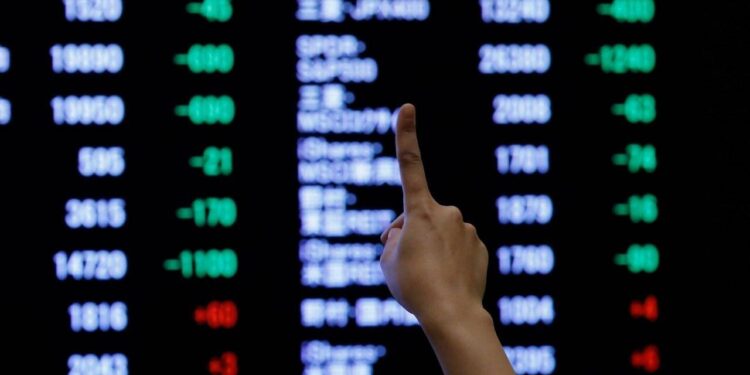 In nutshell, Indian equities are looking at a long phase of a strong earnings growth cycle and capex turnaround over the next 3-5 years.
In nutshell, Indian equities are looking at a long phase of a strong earnings growth cycle and capex turnaround over the next 3-5 years.(Image: REUTERS)
By Kashyap Javeri
The Indian equity markets, like most of the global equity markets, have been on a rollover last eighteen months. From the lows of March 2020, the large-cap indices have gained nearly 100-110% and the mid & small-cap indices have gained by 150%-200%. But this is more to do with the low base and crash during March 2020 and therefore the long-term compounded annual returns over the last 5 years and 10 years for large caps and mid-small caps are still in the range of 15-18%. In fact, if one looks at BSE Midcap Select Index which is a much narrower and quality Midcap Index, it has given compounded annual returns of just 12.4% in the last five years.
We, therefore, believe that markets’ run-up in recent times is more like catching up with the mean and covering up for the underperformance of the previous years.
However, the recent run-up in broader indices have resulted in sharp rerating of valuations with PER of BSE 30 Index touching 31.5x, which may be the highest in the last 15 years. However, these valuations need to be seen in context of two developments, (a) equity markets continue to provide better yields than comparable assets.
BSE Sensex has 1-year forward earnings yield of 4.9% (including dividends), vs 1-year G-Sec yield of 4.1%, (2) even as mid/small cap indices have moved up quite dramatically, the valuation premium of BSE Select Small and Mid-cap over BSE Sensex is still far away from its peak.
Having spoken about valuations, let’s turn attention to what can happen to earnings. We do believe that Indian economy is entering multi-years strong earnings growth cycle now. Our view on strong economic and consequent earnings growth is backed by few developments (1) inflation has made a come-back after many years. Though too much of it is dangerous, too little of it over FY14-20 also have disincentivized manufacturing (2) government spending is clearly bouncing back with vengeance. We not only like the growth in government spending, what we also like is its quality as incremental spending is going towards capex. (3) Personal and corporate savings are on rise, reflected in strong growth in deposits/SIPs and deleveraging of corporate balance sheets respectively. All these factors are reminiscent of the strong growth years of 2003-10 and creating a sense of Déjà vu.
We also believe that a turnaround in corporate capex cycle is around the corner. The turnaround seems much nearer today than ever in last 7-8 years. Some of the reasons for such view are obvious from above viz, inflation which drives up capacity utilization and deleveraging of balance sheets. But more importantly, there are plenty and more fundamental reasons for corporates to take that capex decisions today viz, (1) the cash return on capital employed today for manufacturing companies in NSE500 index stood at 21%+ for FY21, compare that with fixed deposit rates of 500-600bp. It makes more sense for corporate to invest in new capacities than to invest cash flows in bank deposits (2) until now, getting bank funding for capex projects was constrained by lack of availability of capital with PSU banks (they have 60%+ market share). Today with influx of liquidity and strong capitalisation of PSU bank, funding should be the least of the problems. Hence, we expect a strong bounce back in the capex cycle by FY23.
However, one should be mindful of risks that are also lurking around the corner. Inflation has been a big issue in CY21 and even as it has abated a bit, it still continues to remain high. We believe that the issue is partly transitory in nature and one can clearly see some of the non-ferrous and ferrous metal prices cooling off but crude oil continues to play spoilsport. Any sustained inflation would mean that the central banks across the world may raise rates which will be a party pooper for equities. One can also not brush aside geopolitical risks, especially in our neighborhood, though it is almost impossible to predict the same. Thirdly, we also have many state elections and a general election coming up in the next 36 months. The stability of government will be equally important.
In nutshell, Indian equities are looking at a long phase of a strong earnings growth cycle and capex turnaround over the next 3-5 years. With the risks highlighted above, of course, markets will remain volatile in intermittent phases. But that shouldn’t deter anyone who is looking at the creation of long-term wealth which can be generated only through compounding. Corrections are always part of any bull cycle and investors must use them to their advantage in such times.
(Kashyap Javeri is a Fund Manager at Emkay Investment Managers. The views and investment tips expressed by the expert on Indian equity markets are his own and for information purpose only. Any advice shared by the expert needs to be checked with the independent financial adviser before taking any investment decisions.)
Get live Stock Prices from BSE, NSE, US Market and latest NAV, portfolio of Mutual Funds, Check out latest IPO News, Best Performing IPOs, calculate your tax by Income Tax Calculator, know market’s Top Gainers, Top Losers & Best Equity Funds. Like us on Facebook and follow us on Twitter.
![]() Financial Express is now on Telegram. Click here to join our channel and stay updated with the latest Biz news and updates.
Financial Express is now on Telegram. Click here to join our channel and stay updated with the latest Biz news and updates.














